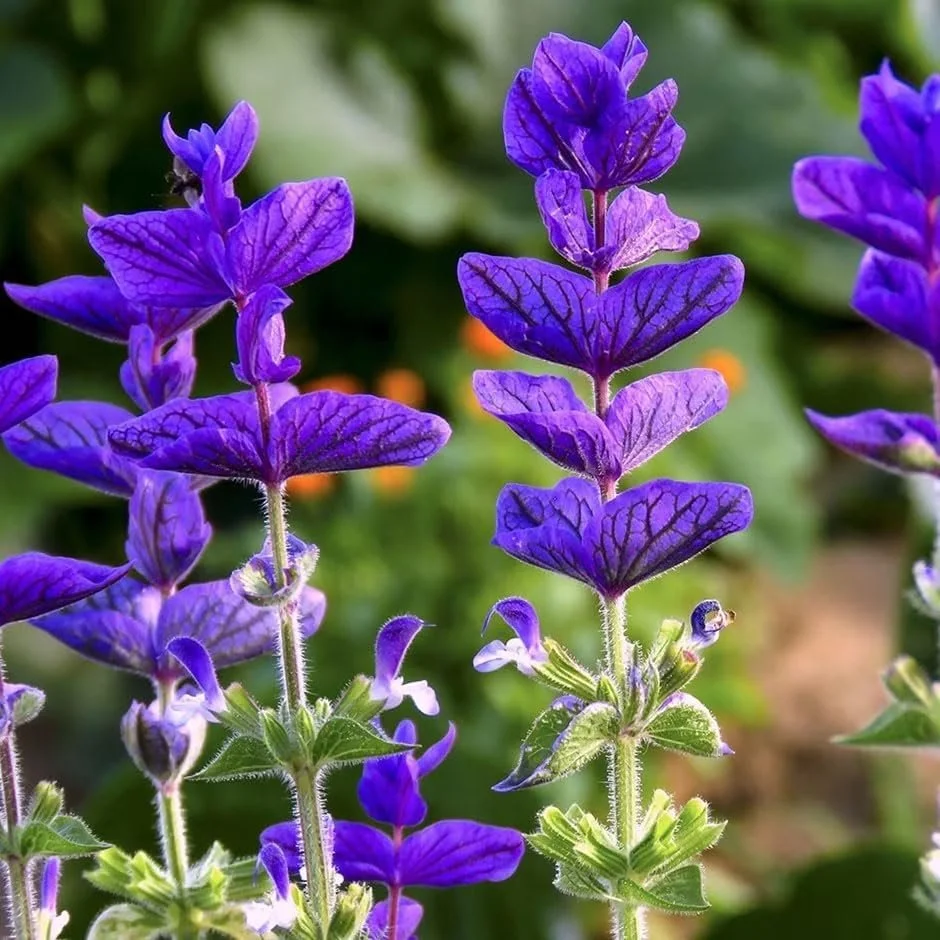Salvia
This small perennial evergreen plant has rough, silver-green leaves that are extremely fragrant. It has blue to purplish flowers.
A popular herb (sage, common sage, garden sage, kitchen sage, culinary sage, dalmatian sage, purple sage, broadleaf sage, red sage), the bitter leaves of this plant make a pleasant seasoning when used sparingly. Do not freeze.
Cooking with Salvia
In the kitchen, it is often mixed with rosemary to flavor roasts. It is also used to flavor sautèed fish, veal, pork and liver.
Butter and sage is an excellent condiment for fresh stuffed pasta such as ravioli and cappelletti, and it is an essential herb for saltimbocca alla Romana. The broader leaves may be dipped in a light batter, fried in oil and served as an antipasto or side dish.
This herb is also used to prepare aromatic oils and vinegar.
Salvia varieties
Salvia officinalis is a member of the mint family, Lamiaceae, and native to the Mediterranean region.
Native to the mountain cloud forests of Mexico. Salvia divinorum is a psychoactive herb which can induce strong dissociative effects when chewed, smoked, or taken as a tincture. Also known as Diviner’s Sage, Seer's Sage, María Pastoram, or Sage of the Seers, this Salvia has been traditionally used in divination and healing.
A herbaceous perennial in the Lamiaceae (mint) family, the plant as hollow square stems, large green leaves, and occasional white flowers with purple bracts. It grows to well over a meter in height.



